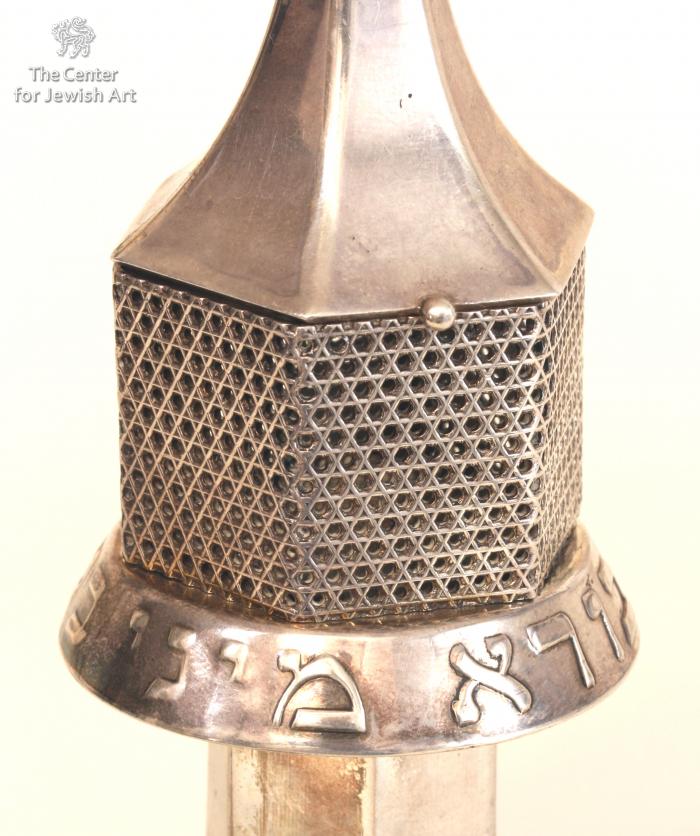Obj. ID: 35555 Besomim, Jerusalem, 1950

sub-set tree:
The following description was prepared by William Gross:
In Jewish tradition, the end of the Sabbath and other Jewish Holidays is marked by the ceremony of Havdalah (Separation) that differentiates between the Holy nature of the holiday and the profane nature of the following day. This ritual is accomplished by lighting a special candle with several wicks, drinking wine from a cup, and the inhalation of the sweet smell of spices. In the Ashkenazi world, these spices were usually held in a container which was often shaped in varying forms.
There exists very little Judaica in the art deco style. Much of what is known is of the german origin or by the German artists and designers who left Germany for Eretz Israel in the 30's. This cup is by someone with the name of Radad in that tradition, the work of whom is known is several examples apparently from the late 1940's and early 1950's. The main body of this work is formed of repetitive Magen David forms in pierced silver. Inscription: Borei Minei Besomim




